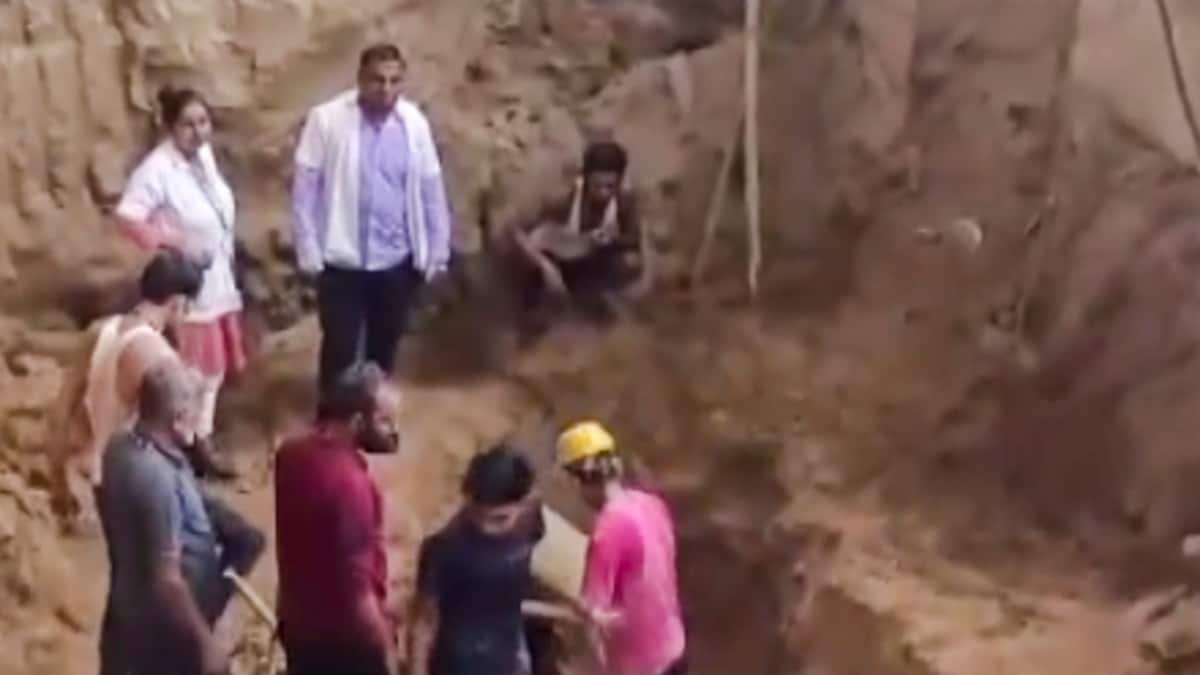The collapse of a construction wall in Gujarat’s Mehsana district resulted in the tragic deaths of at least nine labourers, highlighting the persistent risks faced by workers in the construction industry. This incident serves as a stark reminder of the urgent need for enhanced safety protocols and regulations to protect workers.
Tragic Incident at Construction Site
The incident unfolded on a Saturday afternoon at a factory construction site in Jasalpur village, near Kadi town. Workers were engaged in digging a pit for an underground tank when the under-construction wall crumbled, trapping them under loose soil. The collapse occurred around 1:45 PM, leaving a devastating aftermath.
Rescue Efforts and Casualties
Emergency responders rushed to the scene and launched a rescue operation. Despite their tireless efforts, the incident claimed the lives of nine workers, while one 19-year-old survivor was pulled out alive. The young survivor provided crucial information, confirming that 8-9 workers were present at the site and raising concerns about the remaining 2-3 individuals still unaccounted for.
Government Response and Condolences
The incident triggered an immediate response from the government authorities. Mehsana District Development Officer Dr Hasrat Jasmine confirmed the collapse and reported the initial recovery of six bodies. Prime Minister Narendra Modi expressed his profound grief and condolences for the families of the deceased. The Prime Minister’s Office announced an ex-gratia payment of Rs. 2 lakhs from the PMNRF to the families of the deceased, along with Rs. 50,000 to the injured.
Safety Concerns and Lack of Oversight
The construction wall collapse in Mehsana shines a spotlight on the ongoing issue of workplace safety in India. The tragedy serves as a poignant reminder of the dangers inherent in the construction industry, especially in the absence of rigorous safety measures. While specific details about the cause of the wall collapse are still under investigation, incidents like these highlight the need for comprehensive safety protocols, inspections, and worker education to mitigate risks.
Role of Enforcement and Regulations
The incident underscores the critical role of enforcement and regulations in protecting workers. Construction sites should be subjected to regular inspections to ensure compliance with safety standards and identify potential hazards. The government must prioritize investment in building safety infrastructure, promoting awareness of best practices, and empowering workers to advocate for their safety.
Lessons from the Tragedy
This tragedy serves as a stark wake-up call to prioritize safety and address systemic issues that contribute to worker vulnerability in the construction industry. Addressing these concerns requires collaborative efforts involving:
Worker Safety and Education
- Implementing comprehensive safety training programs for all construction workers.
- Fostering a culture of safety consciousness on construction sites.
- Equipping workers with knowledge and skills to identify hazards and report unsafe practices.
Strengthening Safety Protocols
- Enacting stricter regulations for construction site safety, particularly focusing on structural integrity.
- Introducing standardized procedures for assessing and mitigating risks.
- Ensuring availability of proper equipment and protective gear for all workers.
Enhanced Enforcement and Inspections
- Implementing regular site inspections by qualified professionals to ensure adherence to safety protocols.
- Holding contractors accountable for safety violations through strict penalties and licensing revocations.
- Utilizing technological advancements to monitor and analyze potential hazards in construction projects.
Take Away Points
The tragedy in Mehsana serves as a potent reminder of the paramount importance of worker safety. The incident calls for a holistic approach that tackles not only immediate safety concerns but also addresses systemic vulnerabilities within the industry. Governments, regulatory bodies, construction companies, and individual workers must actively collaborate to establish a safer environment for all. This requires unwavering commitment to strengthening safety regulations, promoting worker education, and fostering a culture of safety awareness across the entire construction sector.




